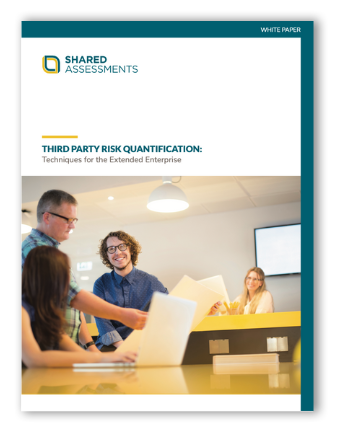What is the Third-Party Risk Quantification paper about?
In the current business landscape, organizations rely on numerous third and Nth parties to produce goods and services. The complexity of these outsourcing activities makes it difficult to understand risks across the supply chain. At the same time, new risks are mounting, and the frequency of severe events is increasing placing new demands on risk practitioners.
As financial consequences of risks become more apparent, boards and C-suites will press for better risk analytics. Investor communities and regulators will increasingly expect organizations to quantify operational risks associated with operations. Statistics will become a standardized part of risk quantification soon.
Fortunately, techniques have emerged that improve the accuracy of risk analysis. This briefing paper offers guidelines and steps for developing a scenario-based approach to risk quantification.

Why is it important to quantify risk?
Solid risk quantification techniques infused with reliable data can provide the basis for informed decision-making and risk mitigation.
How will a practitioner or an organization benefit from reading this paper?
Risk quantification provides a solid foundation for preparedness. This briefing paper leads risk management through scenario planning bringing awareness to severe events from several perspectives:
- Scale – Does a circumstance impact a business unit, a division, or the entire enterprise?
- Identification – When is an event unfolding and will critical vendors be impacted?
- Preparedness – What is your organization’s prepared response? What does this event do to our organization?
Risk quantification can lead to a better-informed risk and impact analysis. This paper will help risk management to understand:
- Where organizations can define a risk that can be addressed.
- Where it is possible to build a set of controls that can effectively mitigate a known issue.
- How to measure the costs associated with building the control to eliminate the risk.
- How to show the business the economic benefit of mitigating the risk.

